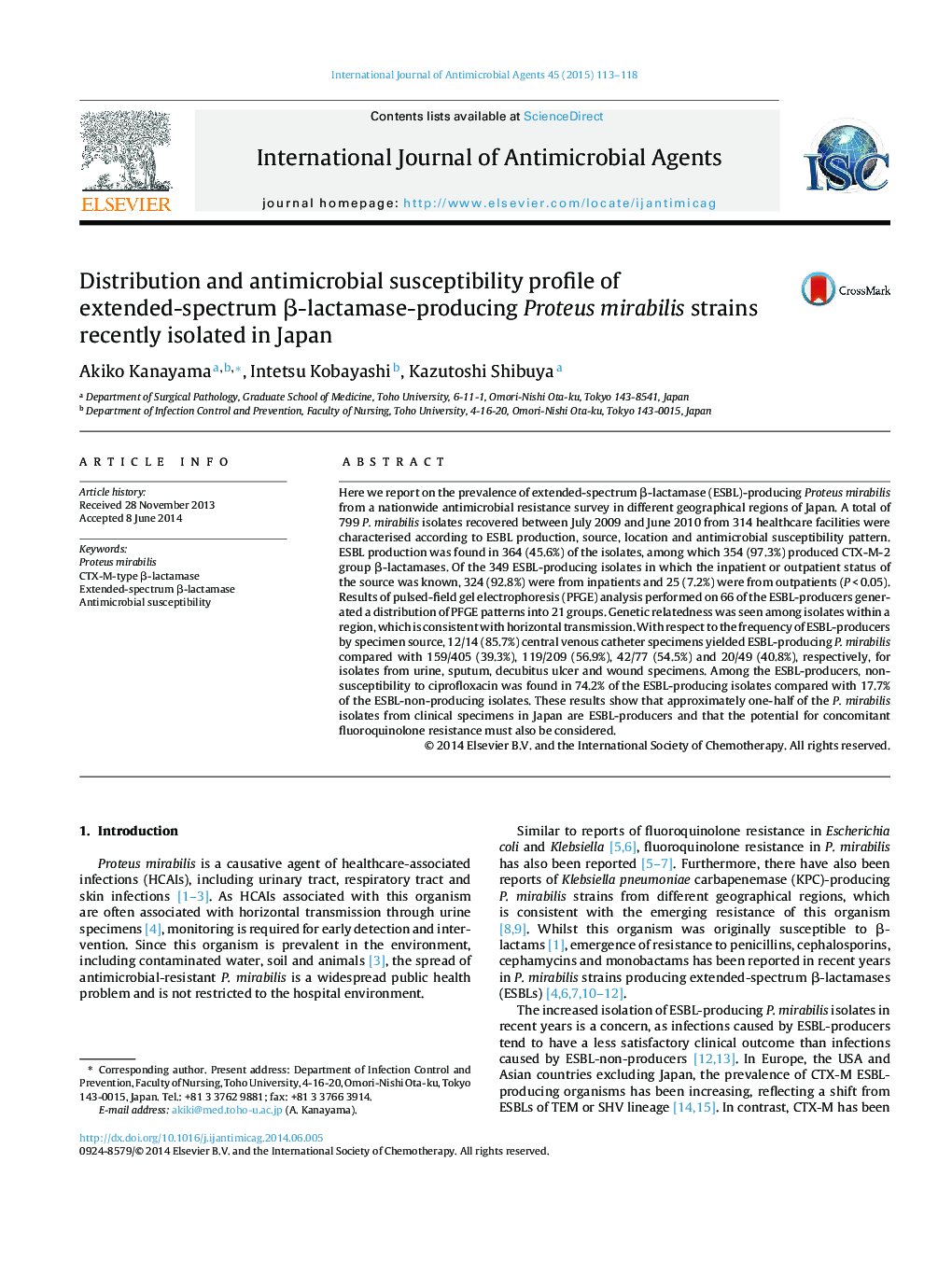| Article ID | Journal | Published Year | Pages | File Type |
|---|---|---|---|---|
| 3358595 | International Journal of Antimicrobial Agents | 2015 | 6 Pages |
•Almost one-half of the P. mirabilis from clinical specimens are ESBL-producers.•Among the ESBL-producers, the CTX-M-2 group β-lactamase gene was detected at 97%.•ESBL-producers prevalence differs by geographical region in Japan.•Fluoroquinolone resistance is common among ESBL-producing P. mirabilis.•PFGE result shows the occurrence of horizontal transmission within a region.
Here we report on the prevalence of extended-spectrum β-lactamase (ESBL)-producing Proteus mirabilis from a nationwide antimicrobial resistance survey in different geographical regions of Japan. A total of 799 P. mirabilis isolates recovered between July 2009 and June 2010 from 314 healthcare facilities were characterised according to ESBL production, source, location and antimicrobial susceptibility pattern. ESBL production was found in 364 (45.6%) of the isolates, among which 354 (97.3%) produced CTX-M-2 group β-lactamases. Of the 349 ESBL-producing isolates in which the inpatient or outpatient status of the source was known, 324 (92.8%) were from inpatients and 25 (7.2%) were from outpatients (P < 0.05). Results of pulsed-field gel electrophoresis (PFGE) analysis performed on 66 of the ESBL-producers generated a distribution of PFGE patterns into 21 groups. Genetic relatedness was seen among isolates within a region, which is consistent with horizontal transmission. With respect to the frequency of ESBL-producers by specimen source, 12/14 (85.7%) central venous catheter specimens yielded ESBL-producing P. mirabilis compared with 159/405 (39.3%), 119/209 (56.9%), 42/77 (54.5%) and 20/49 (40.8%), respectively, for isolates from urine, sputum, decubitus ulcer and wound specimens. Among the ESBL-producers, non-susceptibility to ciprofloxacin was found in 74.2% of the ESBL-producing isolates compared with 17.7% of the ESBL-non-producing isolates. These results show that approximately one-half of the P. mirabilis isolates from clinical specimens in Japan are ESBL-producers and that the potential for concomitant fluoroquinolone resistance must also be considered.
